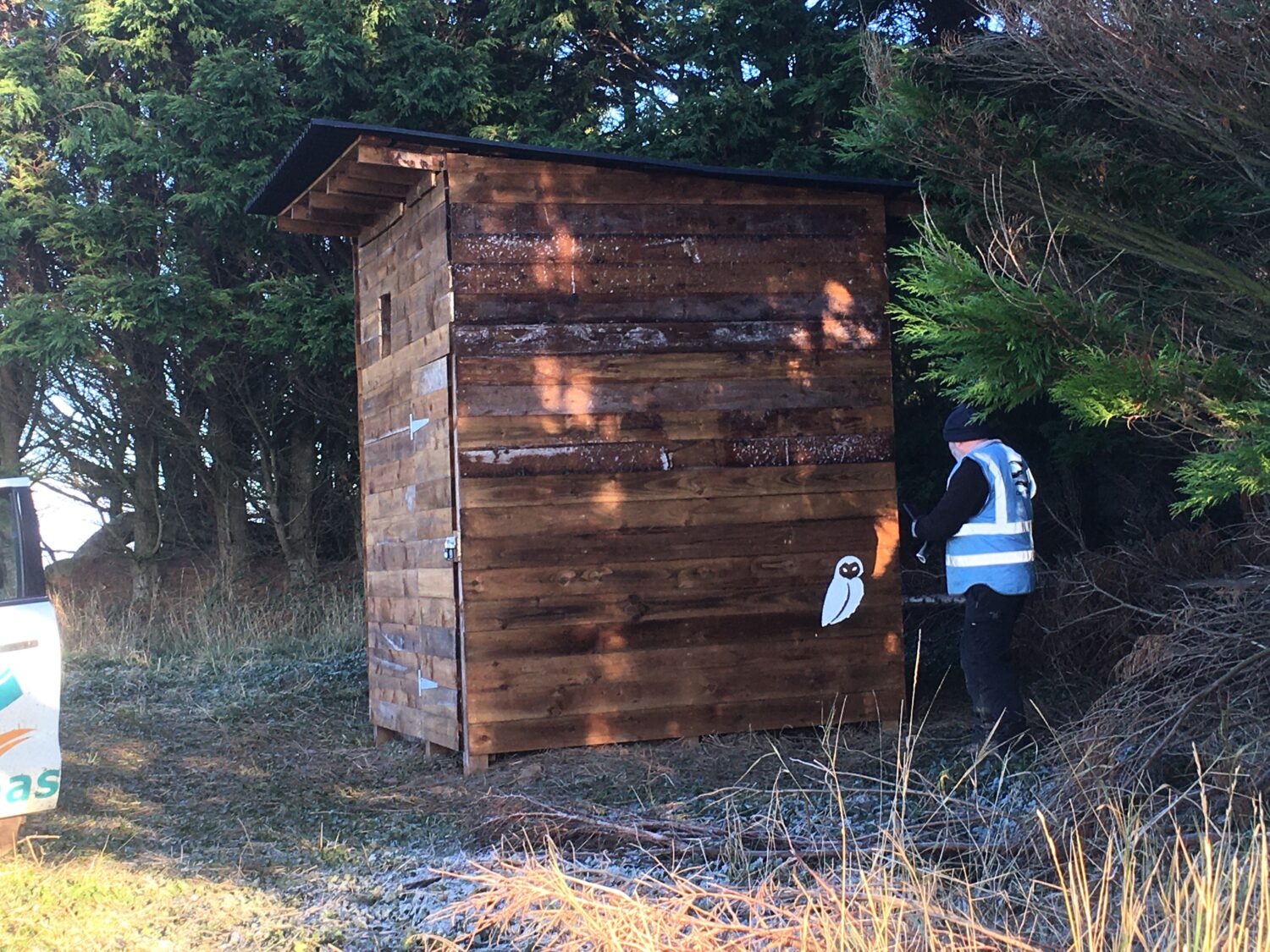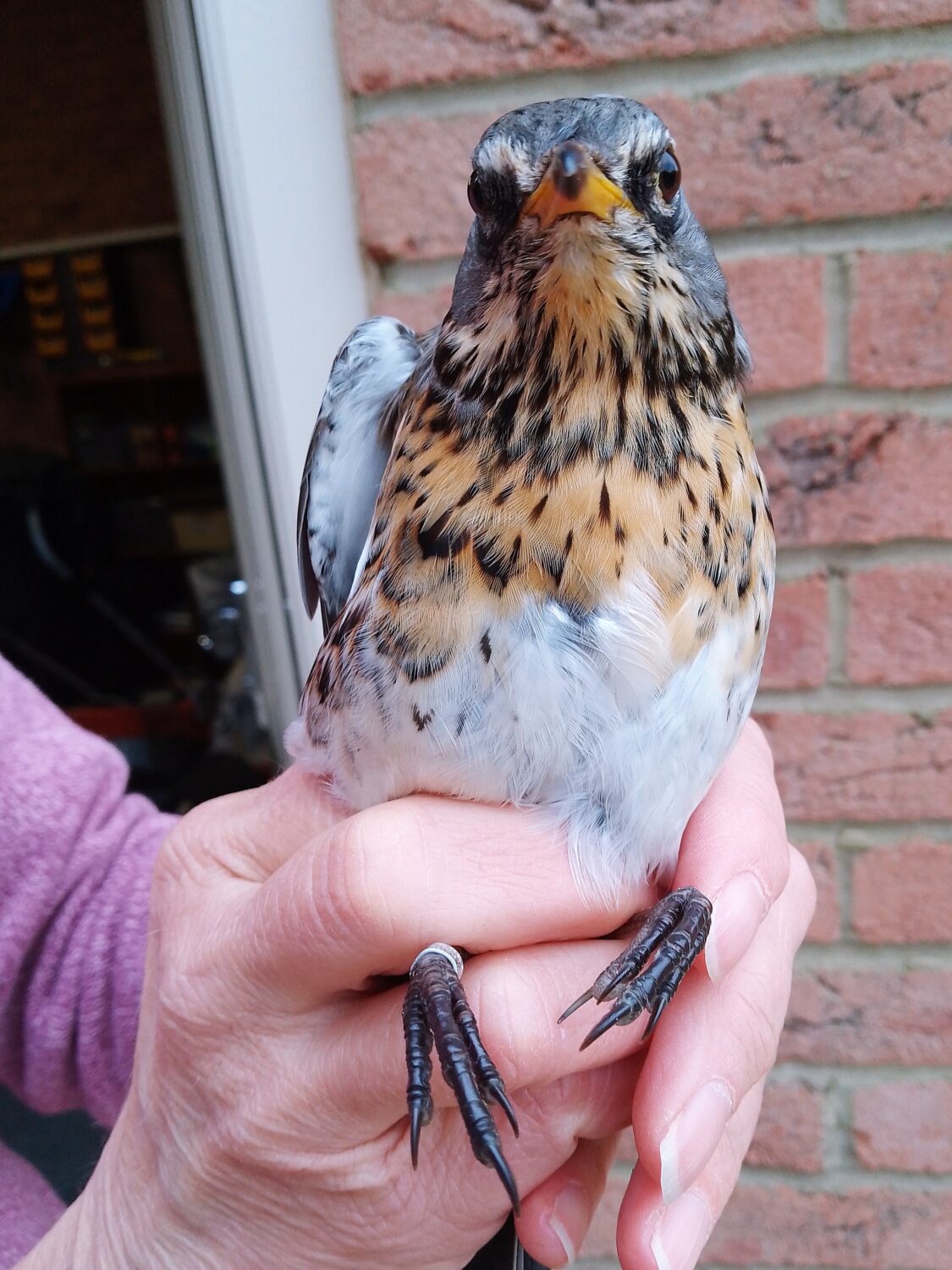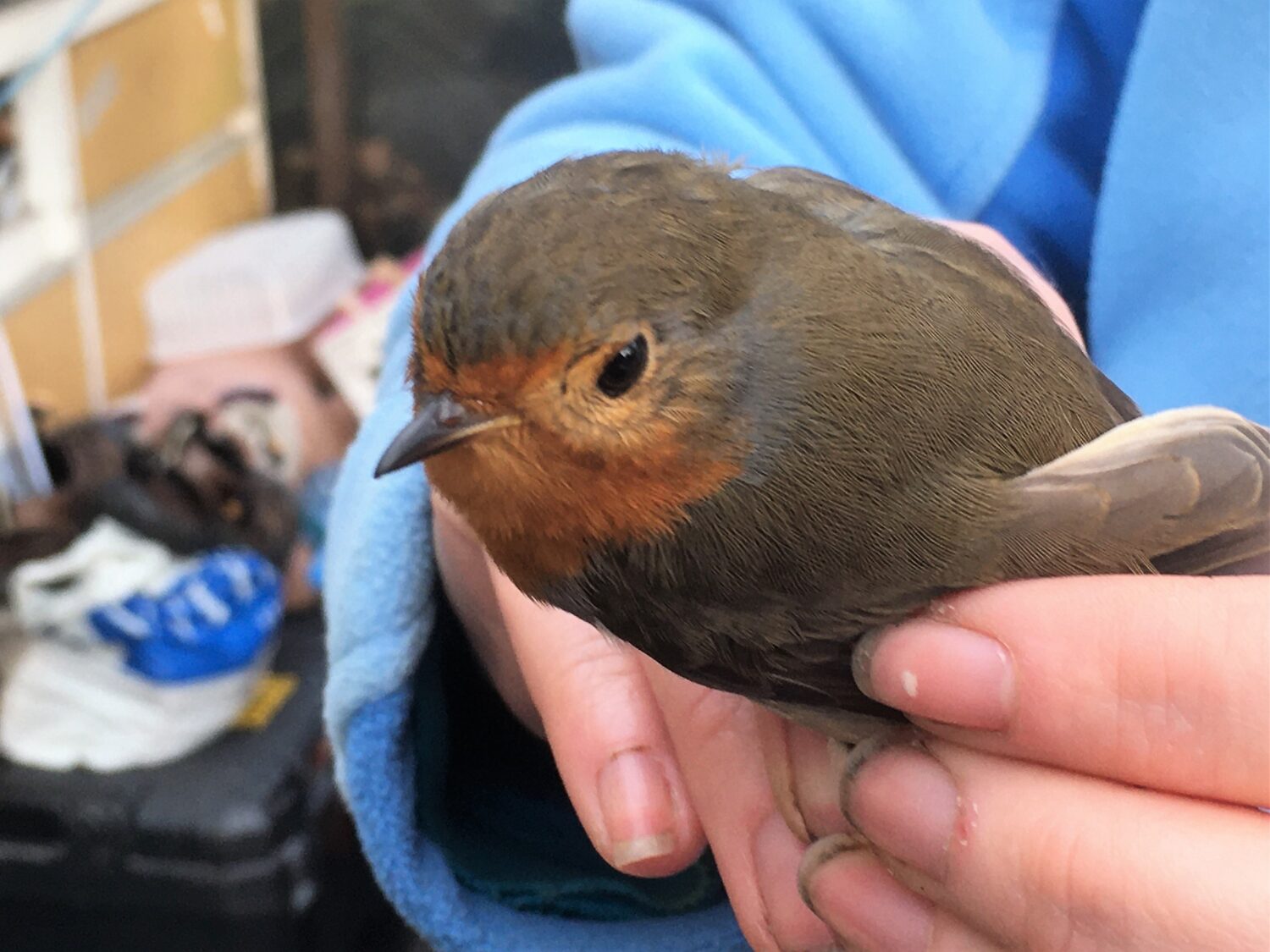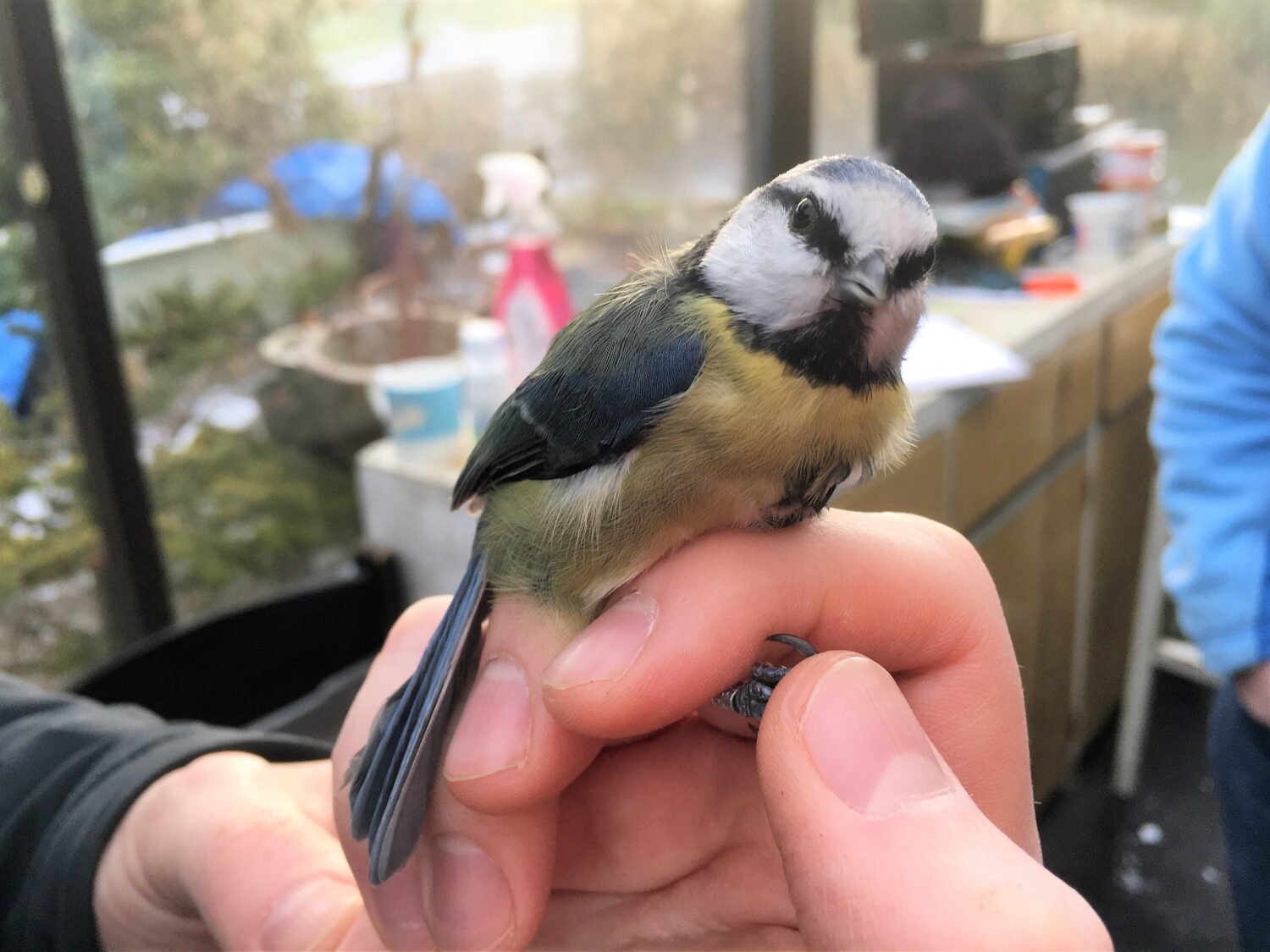North East ornithologist, Phil Hanmer, shares a new update summarising bird ringing across Northumberland throughout December. He also shares the story of a young Barn Owl from Suffolk.
The Story of a Well-Travelled Owl
Due to some pretty horrid weather and the need to take extra health precautions because of bird flu, ringing has been quiet this month. However, while heading out to check and replace a couple of bird boxes with a National Park Ranger, my colleague, Hilary, and I had a very pleasant surprise.
I should explain that we have had some bird boxes of a type that might attract Tawny Owls or even ducks on National Trust land at Low Newton for some years. They have not been especially successful. Possibly due to a miss-timing of their erection which was just before a major pruning back of the surrounding vegetation. It is only in the last year or two that they might have become attractive to owls. Then, we realized that at the boxes might need repair or replacement. As a winter job we set out to do this on 5 December. One must always be cautious when approaching a box that just might contain a Tawny Owl as a Tawny Owl in the face can be dangerous. Putting my gloved hand cautiously in the first box, a Barn Owl came out. There was no one more surprised than me to see it.
This proved to be a very beautiful female owl, showing some hint of Northern European guttata race characteristics in her orange/brown colouring on the upper breast. Additionally, the owl was ringed which we read as GY17093. Scrutiny of the wing pattern to look for moulted primary flight feathers revealed a very uniform pattern, suggesting this was a young owl. I inputted the ring number to the British Trust for Ornithology (BTO) database and waited for a reply. This came quite quickly and revealed that the roosting Barn Owl was less than a year old and had been ringed as an owlet back on the 11 July 22 by a member of the Waveney Ringing Group at Red House Farm, Bacton, Suffolk, over 400 km’s away.
This is remarkable movement for a young bird to make, although not totally unheard of. For example, there was a bird found nesting at Gosforth Nature Reserve in 2020 that had moved from Cambridgeshire.


Setting Up Owl Sheds
I spent several days early in the month working with Coast Care to erect two new owl sheds in the Northumberland Coast AONB near Bamburgh and further north. Owl sheds are an attempt to provide Barn Owls with new nesting sites now that so many of our old barns and hemmels have been lost to holiday developments, lack of maintenance and the ravages of the weather. They are a bit taller than the average garden shed and contain a standard Northumberland Barn Owl Box on a mezzanine floor. We will monitor how they are used as the months move on. For the moment I just take the opportunity to thank everyone at the AONB/Coast Care and the Coast Care Volunteers for their assistance.
Garden Ringing
Hilary had an interesting garden visitor. It was setting up a small territory like a blackbird but was one of its thrush relatives, a Fieldfare. Fieldfares do have a habit of flying high and not usually being very confiding of people as they are still hunted over much of continental Europe. They are less often caught by ringers than their smaller relatives like Redwings. All these thrushes arrive in thousands into the British Isles from Scandinavia in winter. Particularly from Norway in the case of Fieldfares. After several attempts involving quite a few apples, the bird was briefly captured, ringed and identified as a female juvenile. It has outer unmoulted greater coverts in the wing and had mostly grey crown feathers. Hopefully it will return to nest in Norway in the spring.
I am trying to contribute to the BTO’s Winter Ringing Initiative by operating a short morning ringing session, with just a couple of nets at home once per fortnight. To date I have managed this with 45 birds captured on 14 November including a lot of Blue Tits, Great Tits and a few Tree Sparrows. One of the retrapped Blue Tits proved to be from 2019. On 28November I captured 48 birds including four new Robins and four retrapped Robins. 8December saw the catch at 49 including a female Nuthatch. Finally on 19 Decrember I captured 32 birds with two new Robins and three retraps. The purpose of this national initiative is particularly to study age specific survival rates and age ratios.


If you’d like to find out more from Phil on the birds of Northumberland, you can watch his recent talk on breeding Goldeneye here.